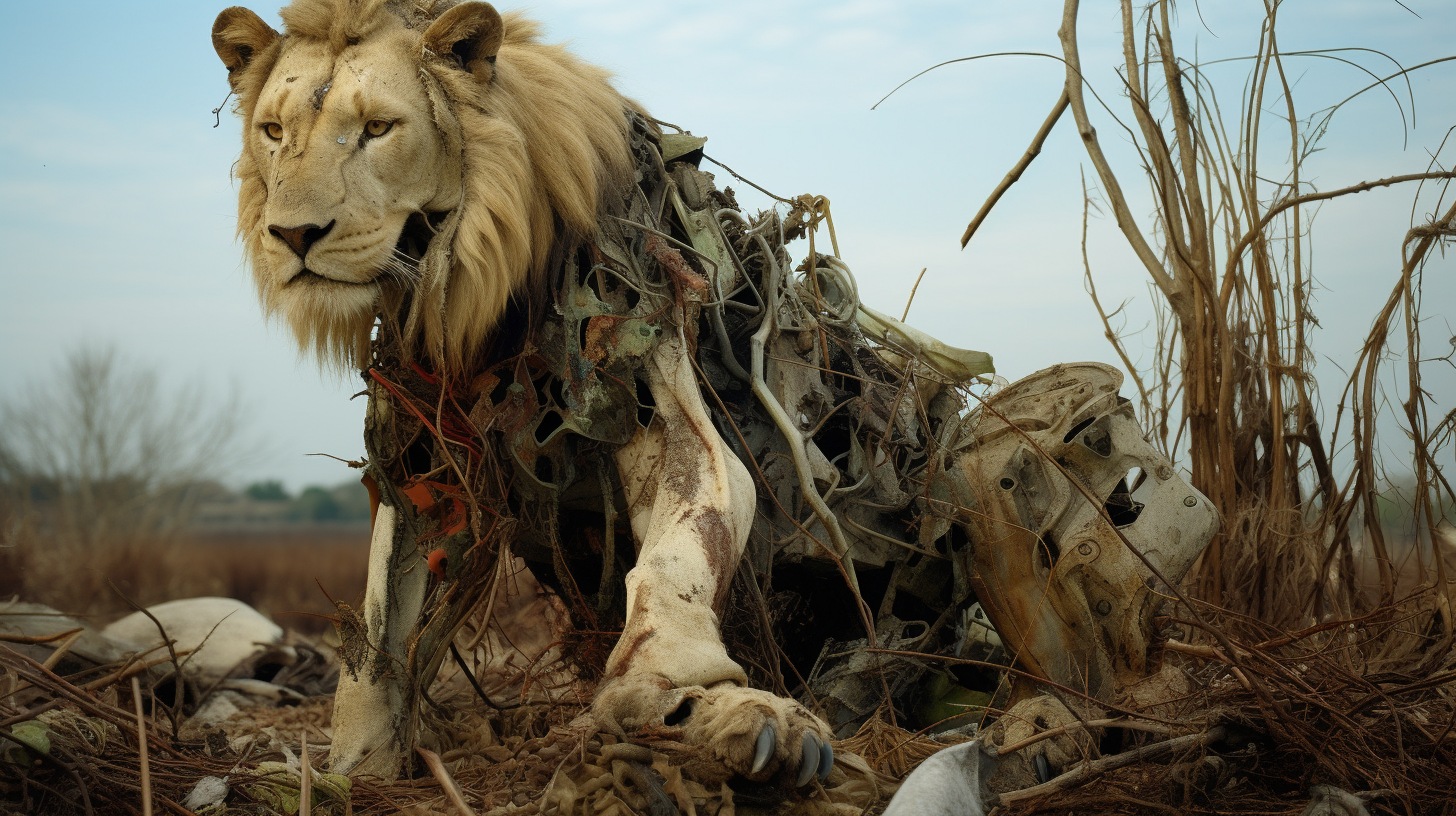In the fabric of our world, where the tapestry of nature once hummed with diversity, a peculiar thread has emerged, materializing in the form of Synthetic Wildlife. The so-called Chimera Creatures, frankensteins of genetic novelty, have found a way to dance to the discordant tune of our environment’s deterioration.
In our ongoing series exploring the relentless adaptations of Earth’s inhabitants to a world skewered by climate crises, today’s focus drifts towards the synthesized survivors of our time – engineered organisms that present the question: What place does ‘natural’ have in the Anthropocene?
From the phosphorescent turtles navigating the oil-slicked oceans to the steel-feathered pigeons dominating the magnetic mayhem of urban skies, these creatures raise the curtain on a new act in ecological evolution, one where the blueprint of life is no longer a manuscript of millions of years but an editable document, subject to instant revision.
Consider the ‘Lungfish of the Land’, a creature that can filter toxic air through bioengineered gills, turning smog-choked cities into its playground. With the agility to traverse both concrete jungles and aquatic abysses with equal finesse, this creature is a testament to possibility and a haunting reminder of the necessities born from manmade disaster.
Where Monarchs of Mutation have shown us the resilience of insects in the face of unnatural selection and Ferocious Flora demonstrated the latent ferocity in the plant kingdom, these chimera creations are neither a natural progression nor a retaliatory adaptation but rather a deliberate concoction. And while they serve as a beacon of adaptability, they also underscore the grotesque lengths required for survival in this altered ecosphere.
Biologists and ethicists alike are entangled in debate over these genetic jigsaw creatures. “With great power comes immense responsibility,” one gene-editing pioneer remarked, “and in crossing species barriers, we’re not just creating life, we’re manipulating the essence of existence itself.” Such words resonate in this twilight of biodiversity, where synthetic organisms may be the shadowy atlas holding up the collapsing world of wildlife.
A stark contrast is drawn between the creatures of yesterday, shaped by the slow and meticulous chisel of evolution, and those of today, forged in haste in the crucibles of human contrivance. The origin of species is now credited to a combination of Darwinian notions and Davincian machinations — a true hybridization of nature and technology.
The emergence of ‘Electric Eels’ powering desolate villages with their bioelectric potential and ‘Bioluminescent Racoons’ acting as living lanterns in the deep forests of skyscrapers — creatures out of myth now emerge as answers to problems once thought to be insurmountable.
Yet, what does the introduction of these synthetic saviors portend for the world that once was? Are they harbingers of a nature revitalized or omens of its irrevocable transformation? This quandary sits heavy on the hearts of those struggling to marry their awe of innovation with their grief for a vanishing world.
In conclusion, we confront a strange and uneasy alliance between necessity and ingenuity. An alliance that challenges our understanding of what it means to be ‘wild’ in a world that grows evermore synthetic. As we venture further into the rabbit hole of environmental modification, we may find that our creations are not just surviving but indeed shaping the fabric of evolution in ways we’re only just beginning to comprehend.
The question that persists, echoing in the hollows of our conscience like a sound of distant thunder, is poignant: Will these chimera creatures outlast their makers, becoming curators of a gallery of lost nature, or will they simply be the final specters in a haunting ecological pantomime?
